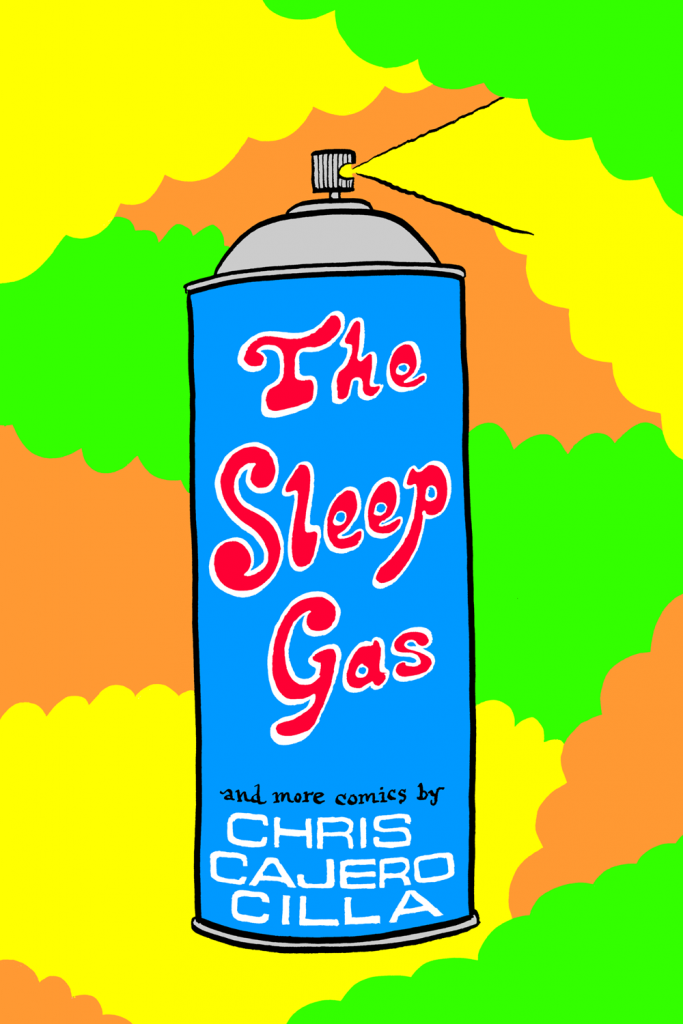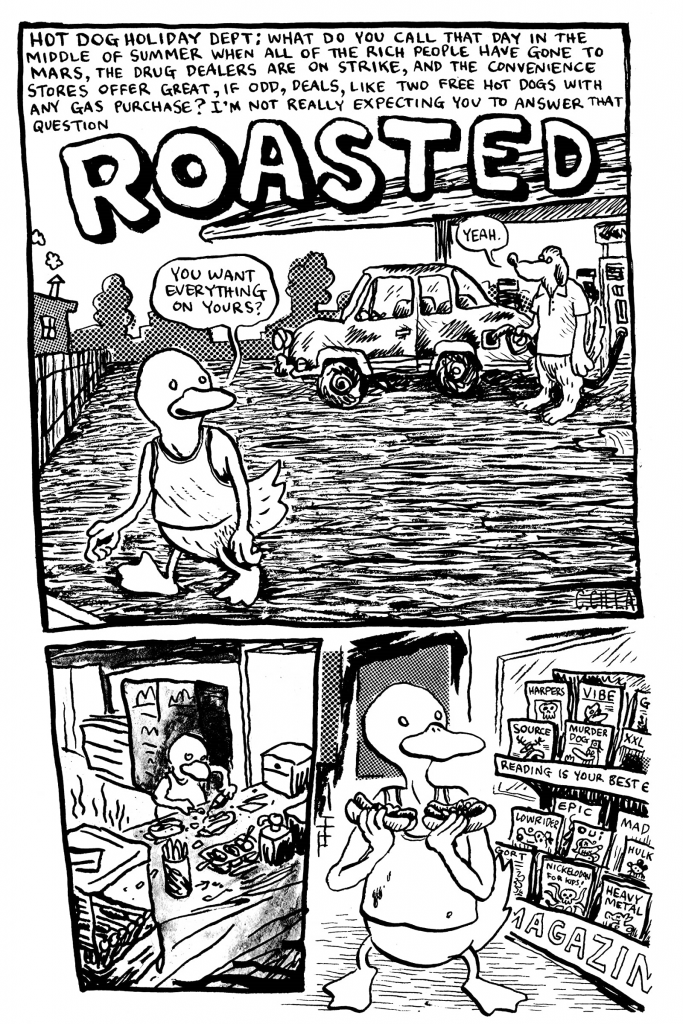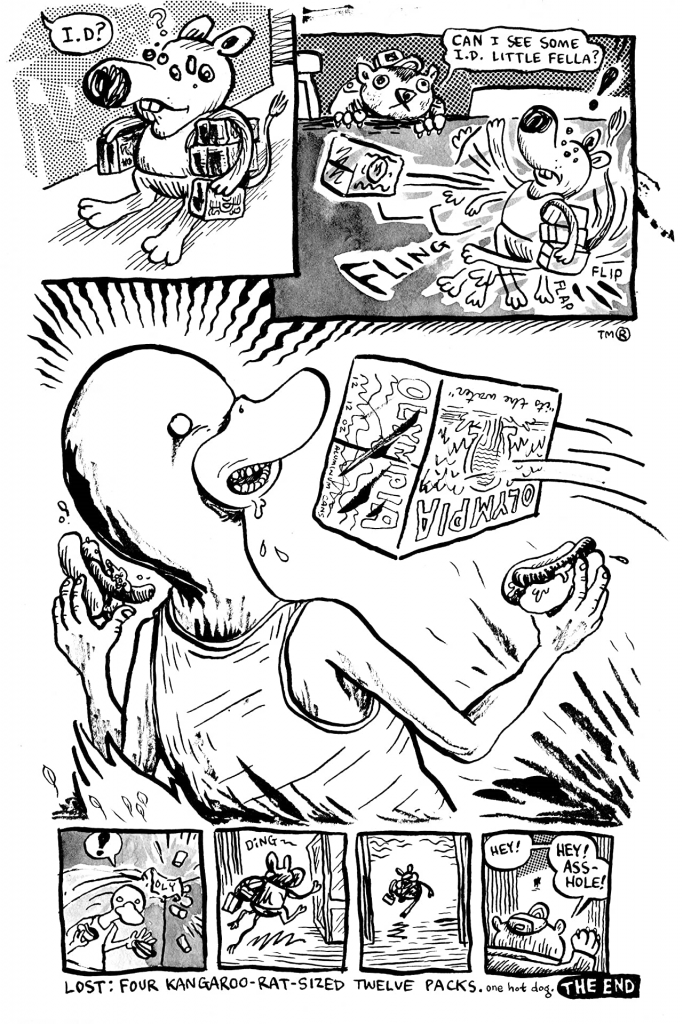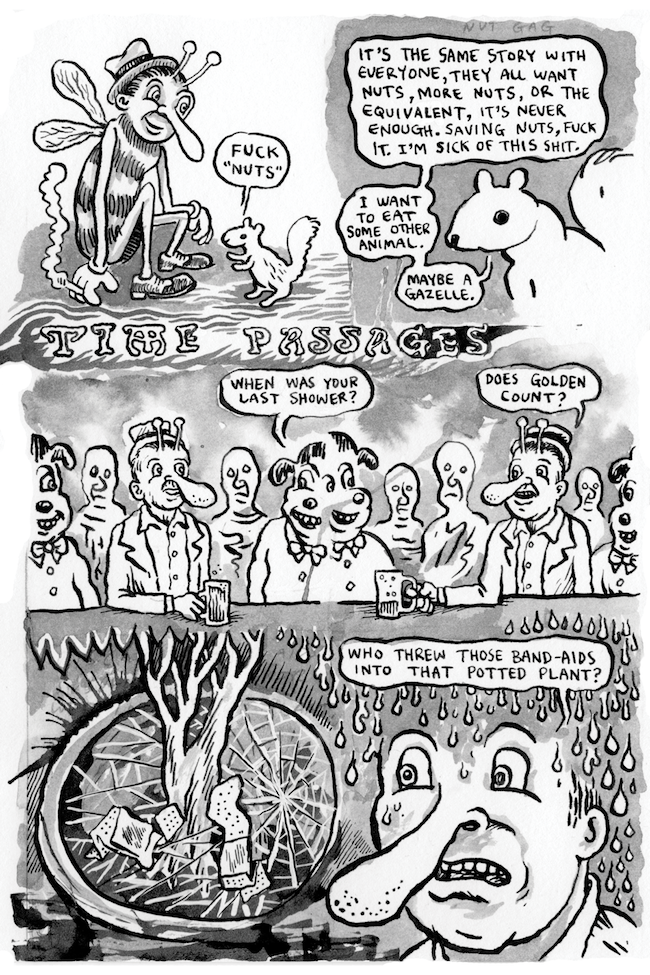
The packaging and curation of an anthology collection of one cartoonist is always a tricky wicket to navigate: adhere too closely to some editorially-imposed theme and you run the risk of leaving some worthy content out; just run everything you’ve got and it looks like — well, you’re just running everything you’ve got. The new-ish collection of short-form strips by the always-surprising Chris Cajero Cilla, The Sleep Gas (Fantagraphics Underground, 2019), leans more in the direction of throwing in everything plus the kitchen sink, but here’s the thing — with Cilla, you really couldn’t do it any other way.
By way of full disclosure, much of the material on offer here is old hat to me, as Cilla’s comics aren’t especially difficult to find, but there’s not a story in here that isn’t worthy of being seen by more eyes, so in that respect alone this project is an intrinsically good idea, but the good news is that this collection offers wonders ranging from the disturbing to the sublime aplenty even if you’ve read most of this stuff already. Part of that is due to the fluidity of the “running order” the strips are presented in, sure, but another part of it is down to the simple fact that no single Cilla story reads the same way twice.

In terms of its physical format, the book wisely apes the “flip-book” conceit of Cilla’s Revival House release Labyrinthectomy/Luncheonette, with the same strip that served as the transition between “A” and “B” sides in that one — an ensemble piece of deliberately absurdist non-sequitur hijinks converging upon/congealing at the luncheonette of its title — conscripted to serve in that role here as well, and representing the de facto “ending” of both The Sleep Gas and its reverse/twin, Dull Buzz. The story is linear enough at first glance, with ostensible protagonist Leslie The Bee Man and entourage strolling into a greasy spoon that’s part Kafka, part McKenna, all Cilla, but as the art transitions from ink wash to more traditional pen and ink and back again, it loops back in on itself and transcends its mundane trappings while simultaneously revealing them to have been anything but from the outset. None of it makes a tremendous amount of sense on a purely liminal level, but that’s not the point: Cilla is pulling straight from the id here, and depositing the results directly into yours.
Undercutting everyday norms with a running streak of Lynchian subconscious channeling is a constant herein — and, like Lynch, the results can run the gamut from terrifying to funny as hell. On the “terrifying” end of the scale we’ve got “The Debt And The Damages,” which utilizes casual but graphic violence to paint a full picture of the daily routine of a serial killer, while the “funny as hell” is perhaps best exemplified by “Secret Tourist” (perhaps the most widely-seen strip in this collection given it originally ran in Kramers Ergot), a brief story about a tour guide’s even more brief sexual tryst that’s crashed by — well, that would be telling, but the deft touch Cilla applies while acknowledging and undermining his own use of trite irony is really something to see.

As you’ve likely picked up by this point, there’s a lot of what can generally be classified as “weirdness” to be had here, but one way or another it’s always “weirdness” with a purpose rather than simply the sort that’s indulged in for its own sake. Most frequently that purpose is to subvert our perceptions of the ordinary in ways ranging from the subtle to the glaringly blatant, but the crucial distinction that sets Cilla’s explorations of this theme apart from that of his legion of contemporaries who have concerned themselves with much the same is that he seems entirely comfortable following the “inner voice” of his subconscious to wherever it may lead him rather than attempting to steer it to achieve some pre-determined result on the one hand, while utterly refusing to take himself so goddamn seriously on the other. His commitment to his craft is beyond doubt — it looks to me like he even uses good old Zip-A-Tone on a couple of these stories, although it’s likely a digital approximation thereof — but he’s also very much in tune with the humorous roots of cartooning as an art form. That’s most obviously demonstrated by his recurring use of anthropomorphic “funny animals” — or human beings dressed as animals — but it’s also evident in his sense of comic timing, his uniformly askew point of view, and his penchant for the “twist” ending. There’s something very appealingly “old school” about much of this, and that’s refreshingly unpretentious in this day and age.

That being said, whether ingested in small doses or consumed directly in one go, The Sleep Gas is never less than surprising at every turn. Cilla may frequently (though not always) adhere to a structure that most of us know the contours of well enough, but the manner in which he fills in the details is always surprising, largely because it usually doesn’t seem like he’s consciously figured out how he’s going to get from “Point A” to “Point B” himself — hell, more often than not, what “Point B” even is remains an enticing mystery until we arrive at it. The fact that he “finishes” things off by having us flip the book and start all over again is the perfect metaphorical icing on the cake, and you shouldn’t in any way be surprised if you find yourself more than eager to read it all through a second time immediately. I know that I was — and I’d read most of this stuff once or twice before it was even collected in this volume.
SOLRAD is made possible by the generous donations of readers like you. Support our Patreon campaign, or make a tax-deductible donation to our publisher, Fieldmouse Press, today.

Leave a Reply